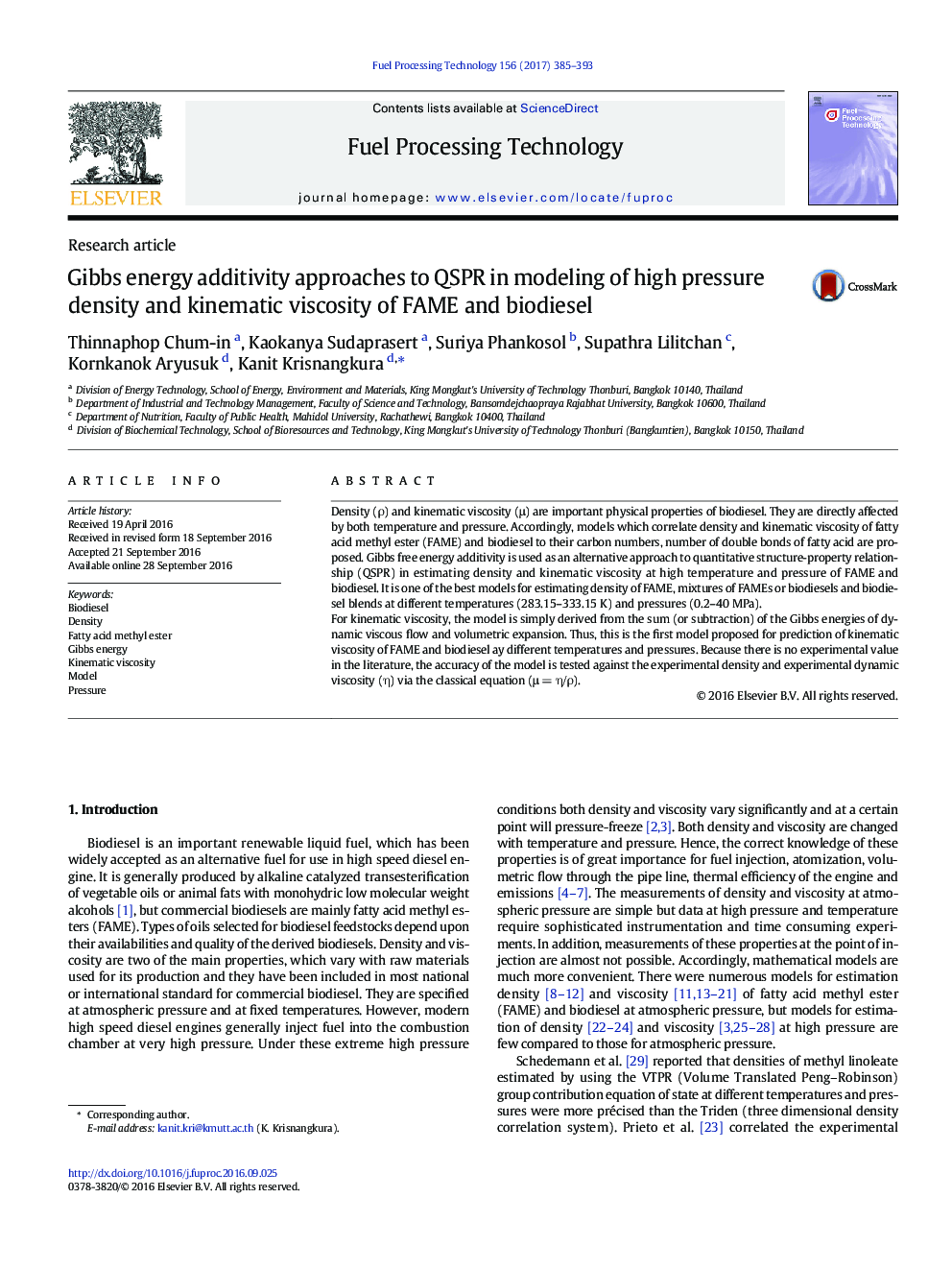| Article ID | Journal | Published Year | Pages | File Type |
|---|---|---|---|---|
| 6476690 | Fuel Processing Technology | 2017 | 9 Pages |
â¢Two predictive models for density and kinematic viscosity under high pressure are proposed.â¢QSPR is approached via energy additivity method in the modeling.â¢Density of FAME and biodiesel can be predicted by the same equation.â¢Kinematic viscosity of FAME and biodiesel can be predicted by the same equation.â¢It is the first model proposed for estimation of kinematic viscosity at high pressure.
Density (Ï) and kinematic viscosity (μ) are important physical properties of biodiesel. They are directly affected by both temperature and pressure. Accordingly, models which correlate density and kinematic viscosity of fatty acid methyl ester (FAME) and biodiesel to their carbon numbers, number of double bonds of fatty acid are proposed. Gibbs free energy additivity is used as an alternative approach to quantitative structure-property relationship (QSPR) in estimating density and kinematic viscosity at high temperature and pressure of FAME and biodiesel. It is one of the best models for estimating density of FAME, mixtures of FAMEs or biodiesels and biodiesel blends at different temperatures (283.15-333.15 K) and pressures (0.2-40 MPa).For kinematic viscosity, the model is simply derived from the sum (or subtraction) of the Gibbs energies of dynamic viscous flow and volumetric expansion. Thus, this is the first model proposed for prediction of kinematic viscosity of FAME and biodiesel ay different temperatures and pressures. Because there is no experimental value in the literature, the accuracy of the model is tested against the experimental density and experimental dynamic viscosity (η) via the classical equation (μ = η/Ï).
